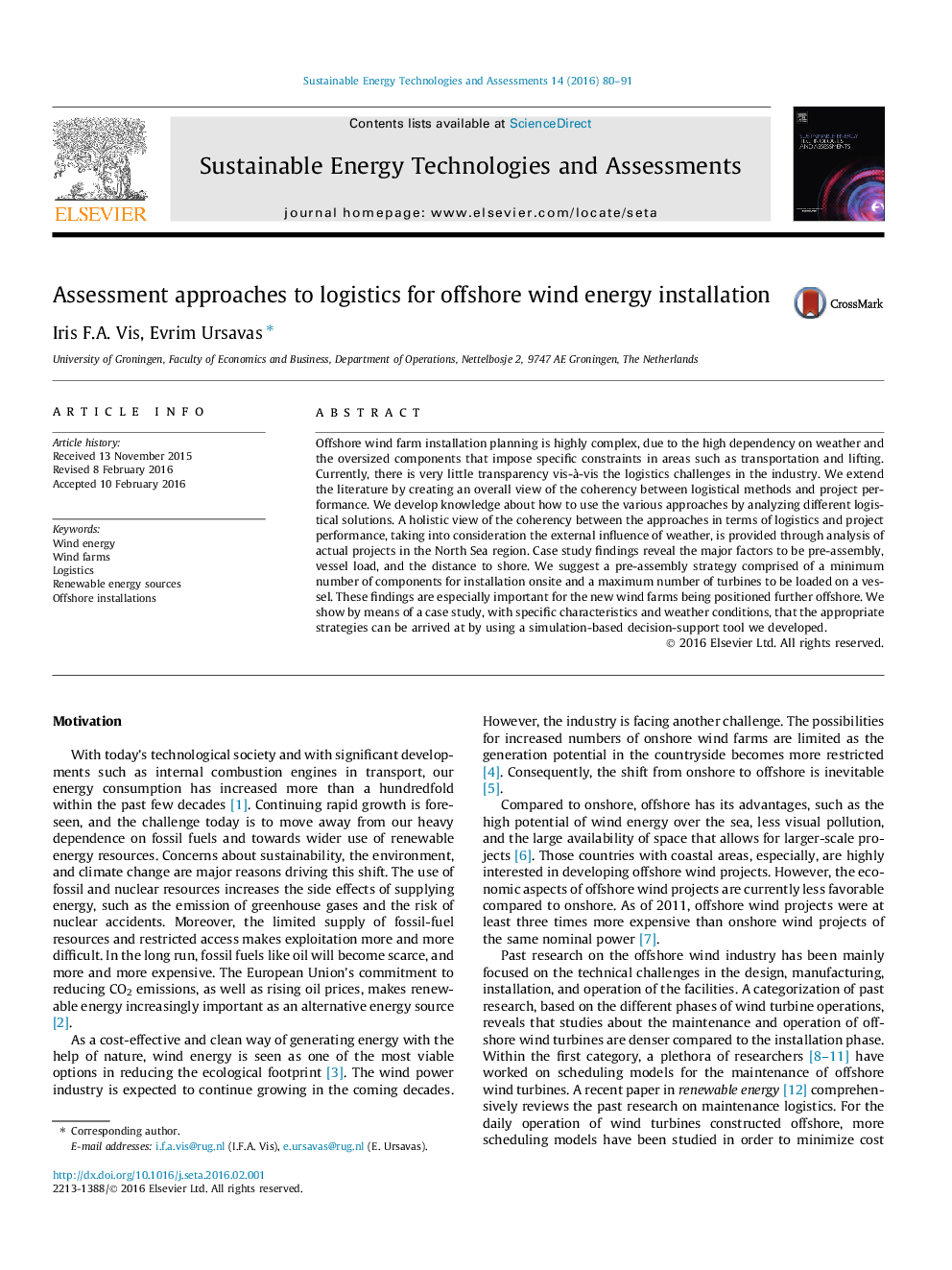| Article ID | Journal | Published Year | Pages | File Type |
|---|---|---|---|---|
| 8123047 | Sustainable Energy Technologies and Assessments | 2016 | 12 Pages |
Abstract
Offshore wind farm installation planning is highly complex, due to the high dependency on weather and the oversized components that impose specific constraints in areas such as transportation and lifting. Currently, there is very little transparency vis-Ã -vis the logistics challenges in the industry. We extend the literature by creating an overall view of the coherency between logistical methods and project performance. We develop knowledge about how to use the various approaches by analyzing different logistical solutions. A holistic view of the coherency between the approaches in terms of logistics and project performance, taking into consideration the external influence of weather, is provided through analysis of actual projects in the North Sea region. Case study findings reveal the major factors to be pre-assembly, vessel load, and the distance to shore. We suggest a pre-assembly strategy comprised of a minimum number of components for installation onsite and a maximum number of turbines to be loaded on a vessel. These findings are especially important for the new wind farms being positioned further offshore. We show by means of a case study, with specific characteristics and weather conditions, that the appropriate strategies can be arrived at by using a simulation-based decision-support tool we developed.
Related Topics
Physical Sciences and Engineering
Energy
Energy Engineering and Power Technology
Authors
Iris F.A. Vis, Evrim Ursavas,
